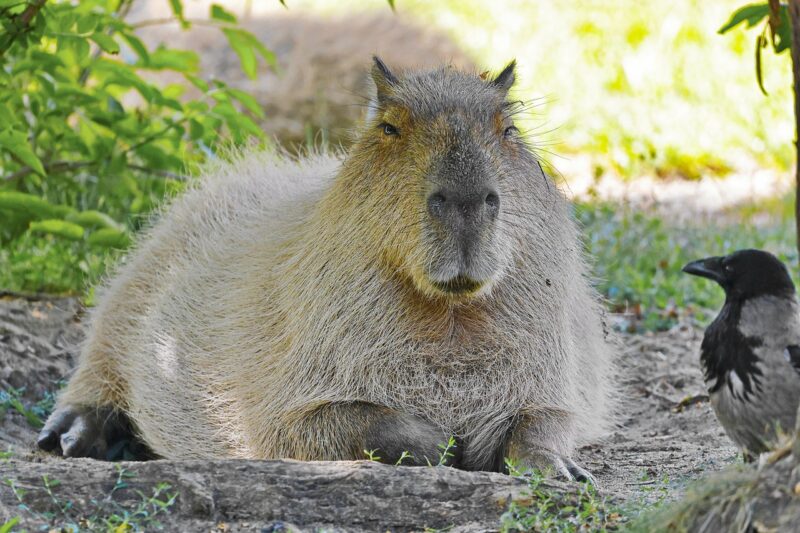How Capybaras Coexist Peacefully with Other Animals: Insights from Their Unique Social Behavior
November 13, 2024

Capybaras, the world’s largest rodents, are renowned for their gentle demeanor and remarkable ability to get along with a variety of other animals. Found in the lush rainforests and savannas of South America, these semi-aquatic mammals have captivated researchers and animal lovers alike with their social behavior. This article explores the fascinating ways capybaras coexist peacefully with other species, shedding light on their unique social structures and behaviors.
1. The Social Nature of Capybaras
Capybaras are inherently social animals, living in groups that can range from 10 to 20 individuals. Their social instincts are paramount for their survival and well-being. These groups typically consist of a dominant male, several females, and their young. The social structure helps maintain group cohesion and enables better protection against predators.
Capybaras communicate through a range of vocalizations, including barks, whistles, and clicks, which help in expressing their emotions and alerting their companions to potential threats.
2. Capybaras and Their Ecosystem
Being semi-aquatic, capybaras thrive near bodies of water, which serve as both feeding and escape grounds. They primarily feed on grass and aquatic plants, playing an essential role in controlling vegetation around wetlands. However, their presence in the ecosystem isn’t limited to just being herbivores; they have a unique way of cohabitating with other wildlife.
3. Camaraderie with Other Species
One of the most remarkable aspects of capybara behavior is their ability to coexist with a plethora of other animal species, often seen lounging alongside them in tranquil settings. Some of the animals that frequently share their habitat with capybaras include:
- Birds: Various bird species like herons and storks often perch on capybaras’ backs, feeding on the insects that haunt their fur.
- Monkeys: Capybaras are frequently observed in close proximity to monkeys, which often take advantage of the rodents’ calm nature for safety.
- Smaller Mammals: Animals such as raccoons and coatis are known to interact with capybaras, sharing resources and foraging areas without conflict.
These interactions not only highlight capybaras’ peaceful coexistence but also underline their status as a keystone species within their habitats, providing refuge and companionship for various wildlife populations.
4. The Role of Temperament in Peaceful Coexistence
Capybaras possess a naturally calm and non-aggressive disposition. This peaceful temperament allows them to navigate complex social environments and develop relationships with animals larger or smaller than themselves. Their sociable nature is pivotal in forming friendships with other animals, as they exhibit a lack of territorial aggression.
Observations indicate that capybaras engage in gentle grooming behaviors with each other and other species, fostering connection and trust. This behavior establishes them as beloved members of the animal community, enhancing their peaceful coexistence.
5. Adaptability and Environmental Awareness
Capybaras exhibit incredible adaptability to their surroundings. They are keenly aware of both their microenvironment and the social dynamics at play. This awareness extends to recognizing potential predators and changes in their habitat, prompting them to adjust their social strategies accordingly.
For example, during droughts when water levels lower, capybaras may gather more closely with their companions and other animals to maximize safety. Such behavioral adaptations are indicative of their survival instincts and communal ethos.
6. The Importance of Conservation
As we celebrate the peaceful coexistence of capybaras with other animal species, it is crucial to acknowledge the threats they face, including habitat loss and hunting. Conservation efforts aimed at protecting their natural habitats are vital to sustaining their populations and, in turn, maintaining the intricate web of life with which they interact.
Supporting wildlife conservation initiatives and habitat restoration projects can help ensure that capybaras continue to thrive and coexist peacefully with their neighbors.
Conclusion
In conclusion, the capybara’s gentle nature and social behavior allow them to inhabit a unique niche within the animal kingdom. Their ability to form bonds with a variety of species not only enriches their lives but also contributes to the health of their ecosystem. Understanding and appreciating these cuddly creatures can inspire efforts to protect their habitats and foster a greater understanding of the delicate relationships within nature.
Next time you hear about capybaras, think of them as ambassadors of peace in the animal world, showing us that coexistence is not only possible but necessary for a robust ecosystem. Let us celebrate and safeguard these serene creatures for generations to come.








